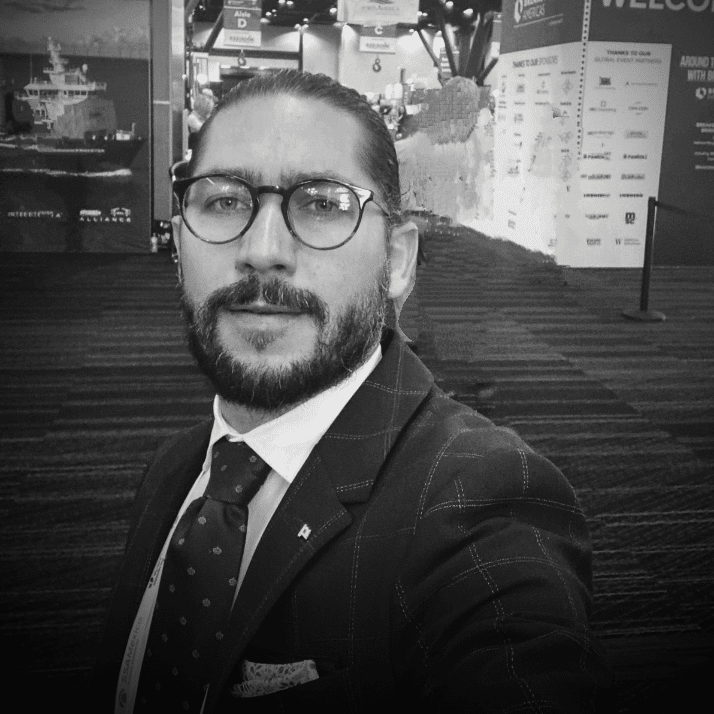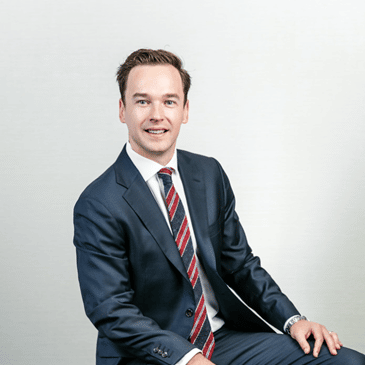This week, we've had further updates on the Saudi jackup situation, along with several interesting developments related to potential upcoming demand in the UK North Sea where concerns over the impact of possible future changes in the UK’s fiscal regime are mounting. Furthermore, there's been plenty of rig movement this past week, with units arriving at or leaving the yards, or transitioning from one contract to another.
In case you missed it, you can access our previous Rig Market Roundup here.
Contracts
ADES Holding Company has received a letter of award from an international oil company for a one-year firm drilling contract for a jackup offshore Qatar. The contract also includes three six-month options. The total contract value from the firm and optional terms is around SAR 350 million ($93.3 million). Operations are expected to begin in the second half of 2024, using one of the five jackups that has recently had contracts with Saudi Aramco suspended. ADES did not specify the client for the newly fixed contract. However, the company did note that they “looked forward to continuing our journey in Qatar with our client” and that the new contract allows ADES to maintain its three-rig presence in Qatar once the 375-ft jackup Emerald Driller relocates to Indonesia later this year following the conclusion of work with TotalEnergies at the Al-Khaleej field. TotalEnergies put out a tender in 2023 for a year-long jackup contract with three six-month options.
TotalEnergies has exercised a three-well option for Transocean 12,000-ft drillship Deepwater Skyros offshore Angola at a rate of $400,000, keeping the rig working into December 2025. Deepwater Skyros has been working for TotalEnergies offshore Angola since 2015. The rig is currently working at a dayrate of $310,000, which is expected to continue into February 2025. The unit will then begin a previous three-well extension fixed in February 2024 at a dayrate of $400,000, continuing into July 2025 and directly followed by the newly-exercised option. With this latest option exercised, the 2013-built unit is now contracted until the end of 2025, contributing to a continued tight market for 7th generation drillships over the next year.
After initially beginning a short-term job in the US GOM in January 2024, Transocean 12,000-ft drillship Deepwater Invictus has had its work with an undisclosed client extended into July 2024. Announced in Q1 2024, the job was originally expected to be around 40 days. Transocean executives stated earlier this year that there is “more interesting work to come” for Deepwater Invictus. The drilling contractor has assigned Deepwater Invictus a 1,080-day contract offshore Mexico to begin in November 2025. This work is understood to be with Woodside for the Trion development. Although currently assigned to Deepwater Invictus, the work may also be given to the 12,000-ft drillships Deepwater Proteus or Deepwater Thalassa. A decision on this is understood to be made by November 2024.
Market sources indicate that several ADES jackups have begun their suspension periods under a recent agreement with Saudi Aramco. Three affected units are moving to anchorage around Ras Tanura. The 250-ft Admarine 262 and the 400-ft Admarine 501 are currently at Ras Tanura while mobilisation of the 400-ft Admarine 503 to this anchorage is underway. An additional two units understood to have been affected by the suspensions have already secured additional work; with ADES announcing contracts for its rigs in Thailand and Qatar. ADES reported in April that it had agreed with Saudi Aramco to suspend operations for five jackups. These suspensions are for up to 12 months and the original term of the suspended contracts will automatically be extended for a period equal to the suspension for each rig. If the jackups find alternate work during the suspensions, they may complete firm and optional terms before resuming work with Aramco. Aramco is issuing suspensions for multiple jackups as the state oil company backs off a previously planned increase in daily oil capacity. Borr Drilling’s 400-ft jackup Arabia I and ARO Drilling-leased 350-ft jackup Valaris 143 have received suspension notices. COSL and Shelf Drilling each noted suspensions for four units, while Arabian Drilling has reported suspensions for three jackups. Market sources have indicated that suspension notices for additional rigs have been issued or are under discussion with other drilling contractors. Over 20 jackups are expected to be suspended in the coming months. The contract suspensions are increasing jackup availability in the global market, with contractors searching for work outside Saudi Arabia, as seen with ADES recently fixing rigs on contracts in Thailand and Qatar. The increase in available rig supply is expected to cause some downward pressure or flattening in jackup dayrates over 2024.
Drilling Activity and Discoveries
China’s CNOOC has started infill drilling operations in Beibu Gulf, off China, Horizon Oil, a partner in the project said on Monday. According to Horizon, a COSL-owned drilling rig has been mobilised to the WZ6-12 platform for a one-well campaign, with a second COSL-owned drilling rig also expected to be mobilised to the WZ12-8E platform at the end of April for a three-well campaign. The whole drilling programme, operated by CNOOC, is expected to run for three months. “All four wells will recover incremental oil from existing fields and are targeted as nearby offsets from existing producers,” Horizon said. The four-well programme is forecast to recover an incremental 1.3 mmbbl gross (Horizon net 0.35 mmbbl) to the end of the contract period, with the total incremental oil rate from the four wells estimated at 2,400 bopd gross (Horizon net 600 bopd).
Valeura Energy has recently made three oil discoveries offshore Thailand. Valeura, which has been using Borr Drilling’s 350-ft jackup rig Mist for its drilling operation in Thailand, said on Monday that its exploration drilling campaign had resulted in three new oil discoveries, one in the Nong Yao D area (Nong Yao-13 well), and two in the north-east portion of the Wassana concession (Niramai-4 and Niramai-4 ST1 wells). The Nong Yao-13 well, which discovered just over 30 feet of new oil pay across several intervals, also confirmed that oil has migrated in this area of the block, alleviating previous concerns. Valeura said the work thus far warranted further seismic data analysis to seek out potential locations for follow-up exploration and appraisal drilling in the vicinity, with the ultimate objective of amassing sufficient volumes to justify a future development. Also, Valeura drilled two wells north of the Wassana oil field with the objective of identifying sufficient oil volumes in this northern area of the block to justify a future development project. The Niramai-4 well was an exploration/appraisal well approximately one kilometre northeast of the successful Niramai-1 oil discovery, which was originally drilled in 2009. The Niramai-4 well was drilled to 7,312 feet MD (5,581 feet TVD) and discovered over 90 feet of new oil pay across two key reservoirs. Following evaluation, the well was then sidetracked with a high-angle well named Niramai-4 ST1 to test the Wassana North prospect, a separate fault block immediately north of the Wassana field. The well was drilled to 12,388 feet MD (5,782 feet TVD) and discovered approximately 40 feet of new oil pay. “While reservoir properties and volumetric estimates are still being calculated for both wells, when combined with the pre-existing Niramai volumes, the total recoverable volumes are believed to exceed management’s requirements to support an additional future development on the G10/48 block. Such a development expansion is beyond the scope of the Wassana field re-development project currently being evaluated, but has the potential to extend production and the life of the concession beyond its current economic limit in 2032,” Valeura said. The Mist rig has been mobilised to the Nong Yao field, where it will soon begin drilling two infill development wells on the Nong Yao A platform, intended to add to production rates in the near term. Thereafter, and once commissioning work is complete on the Nong Yao C Mobile Offshore Production Unit, the rig will begin development drilling on the Nong Yao C accumulation. Valeura is targeting first oil from Nong Yao C in early Q3 2024.
Transocean’s 1,640-ft semisub rig Transocean Equinox is expected to start drilling for Shell at the Crux field offshore Australia this week. Esgian understands that the rig will start drilling its first well under the contract with Shell on Wednesday, 17 April 2024. Also, Viking Offshore’s CCO Andreas Kjøl shared a social media post on Monday, according to which the AHTS Andreas Viking has completed mooring prelays and hookup of the rig at the Crux project. The Shell-operated Crux development is located in Commonwealth waters in the northern Browse Basin, 190 kilometres (km) offshore north-west Australia and 620 kilometres north-east of Broome, in approximately 165 metres (541-ft) water depth. The Crux gas field has been identified as a source of backfill gas for the existing Prelude Floating Liquefied Natural Gas (FLNG) unit. The proposed Crux development project consists of a not normally manned platform with five production wells. The platform will be connected to the Prelude FLNG facility via a 160-kilometre pipeline and will be operated remotely from the Prelude FLNG facility. Following the completion of the drilling work for Shell, the Transocean Equinox will start working for a consortium that includes Beach Energy, Cooper Energy, Woodside Energy, and ConocoPhillips, which will share the unit for their respective drilling programmes. Following the firm part, and if all related options are exercised, the rig could stay busy in Australia until October 2028.
Vår Energi has made an oil discovery in the Ringhorne Nord (wells 25/8-23 S and 25/8-23 A & B), north of the Ringhorne Øst field, in the Balder area off Norway. The wells are located in the North Sea licence 956, which is operated by Vår Energi, with Aker BP, Sval Energi, and Harbour Energy participating as partners. The wells were drilled by the Odfjell Drilling-managed 3,900-ft semisubmersible, Deepsea Yantai. The water depth at the site is 127 metres. Preliminary calculations indicate the size of the discovery at between 2 and 3.7 million standard cubic metres of recoverable oil equivalent (Sm3 o.e.). This is the equivalent of 13-23 million barrels. The licensees are considering a tieback of the discovery to existing nearby infrastructure. The discovery supports the plans for continuous development of the Balder area as a long-term production hub in the North Sea. It also de-risks more drillable prospects in the area and opens up potential development synergies with other nearby Vår Energi-operated discoveries such as King-Prince and Evra-Iving. Vår Energi has recently conducted exploration activity in the area, including the drilling of two exploration wells in production licence PL 917 in the Hubert and Magellan prospects. The wells were dry. The Norwegian operator is involved in 16 planned wells, targeting over 150 mmboe of net risked prospective resources, in 2024. The rig has several other contracts this year, including the one with Shell, PGNiG, DNO, and ConocoPhillips.
Woodside Energy has reached an FID on the Xena-03 offshore well in the Xena field to support ongoing production from the Pluto LNG Project in Australia. Woodside will drill one new well and install an associated wellhead and Xmas tree. Xena-03 will be connected to the existing Pyxis Hub subsea infrastructure. The Xena-03 well site is located in Production Licence WA 34 L, around 15km (9.3mi) from the Pluto Platform and around 190km (180mi) west north-west of Dampier. Woodside will drill and tie back the well using a moored, dynamically positioned (DP) or hybrid (DP/moored) mobile offshore drilling unit (MODU). The well water depth is around 580 ft. According to a Woodside document released in February 2024, drilling activities are expected to start around Q2 2025. Woodside currently has two semisubmersible drilling rigs on contract in Australia, the 1,640-ft Transocean Endurance and the 10,000-ft Valaris DPS-1. The Transocean Endurance has a firm contract until April 2025, with further extension options that could keep it busy until March 2026. The Valaris DPS-1 contract runs until July 2025.
Demand
EnergyPathways is in progressive engagement with regulators to enable fast-track development of its Marram gas project located in the Irish Sea. Meanwhile, the company has started the next phase of the FEED process for drilling and completions for the project. EnergyPathways has applied to the UK’s NSTA and the Offshore Petroleum Regulator for Environment and Decommissioning (OPRED) for Marram’s field development plan (FDP) approvals and has submitted a licence variation request to the NSTA to enable a fast-track Marram development to proceed. Meanwhile, the company continues to progress Marram towards the Final Investment Decision (FID); its Environmental Statement (ES) has been completed and a navigational risk assessment is being undertaken by Anatec Limited. In terms of wider progress within the Marram FEED process, the technical team is progressing engineering and design for an all-electric, zero-emission subsea production system with industry stakeholders, including Verlum, Advanced Mechatronics, and Proserv and has also started the next phase of FEED for drilling and completions engineering with Zenith Energy. EnergyPathways has previously formed a partnership with subsea engineering houses Mermaid Subsea Services and Cortez Subsea of the MCS Group and the partnership is progressing tie-back development concept engineering. In addition, the company is progressing supply chain engagement and scheduling of lead times for certain long lead items including subsea controls, electro-hydraulic umbilical, wellheads, subsea flowline, and other major items.
Hartshead Resources and its joint venture (JV) partners in the Phase 1 gas field development in the UK North Sea (Somerville and Anning) are committed to progressing the project, subject to receiving certainty regarding future fiscal policy. This follows Hartshead’s March 2024 announcement related to a review of the project economics and timeline. Hartshead has now confirmed that the current 2024 JV budget remains in place. The company has had extensive dialogue with various political stakeholders to seek clarity on the future fiscal regime, however, at this time, the situation still remains unclear. It is anticipated that beyond the next parliamentary election in the UK, likely in Q4 2024, there will be changes to the oil and gas fiscal regime and Hartshead has been involved in discussions on the proposed changes and their impact on industry. All stakeholders have expressed their desire to create a fiscal regime in the UK that will still attract and enable investment and activity in the sector, Hartshead said. Hartshead is also continuing discussions on project finance and is in discussions on infrastructure funding that has the potential to significantly reduce the upfront CAPEX required by the JV. This would be positive in respect to whole project economics, moving CAPEX into OPEX via a tariff payable in respect of third-party infrastructure investment, and in respect of Hartshead funding, reducing the funding requirement that Hartshead would need to meet outside the RockRose carry. As part of its focus on maintaining a strong cash position during this period of delay and uncertainty, the company has undertaken a cost reduction initiative in respect of the areas of the project team that were recruited to deliver the current and next phase of the development project and the related contract awards. This has led to a material cut in headcount and a reduction of the monthly costs to the JV and to Hartshead directly.
Baron Oil’s Timor Leste subsidiary SundaGas has decided on the new location for the Chuditch-2 appraisal well site after a survey showed that the seabed at the previously proposed well site was unsuitable for a jackup rig. SundaGas has completed a survey at the planned drilling location for the Chuditch-2 appraisal well, with the survey objective to identify hazards at a proposed well site, ensuring that a drilling rig can be located safely and with minimal environmental impact. Baron Oil said Tuesday that a detailed investigation of the drilling location initially chosen for the Chuditch-2 well revealed an irregular seabed that would be unsuitable for the placement of a jackup drilling rig. As a result, a new more appropriate location has been chosen, which lies 286m to the east-northeast of the initial location. The well will now be situated 5.1km (3.1mi) from the site of the original Chuditch-1 discovery well in a water depth of 68m (223ft). Based on 3D seismic mapping and the results of Chuditch-1, the planned vertical appraisal well drilled at this new location is expected to encounter gas-charged reservoirs 16m (52,5ft) shallower than at the initial location and, as a result, SundaGas now predicts a taller 149m gas column in the reservoir target versus 133m (436ft) predicted at the initial location. Baron Oil also said that SundaGas was in talks with drilling rig contractors and other third-party service providers in support of well construction plans, and was also in contact with other operators in the region that are expected to drill wells in locations relatively nearby. “Discussions with a number of potential funding partners are ongoing and further announcements will be made at the appropriate time,” Baron Oil said.
Deltic Energy considers its Central North Sea oil prospect Syros ‘drill ready’ and is working to secure a joint venture partner through a farm-out process ahead of a required well commitment. The Syros prospect is located in the UK licence P2542 where Deltic has a 100% interest. The prospect is located immediately to the west of the Montrose-Arbroath production platforms, currently held by Ithaca and Repsol, and in close proximity to a number of fields which produce from the same Fulmar sandstones, which are expected to be present within the Syros rotated fault block. Deltic has completed the Phase A work programme on the licence. This work included the purchase of the latest 3D Evolution seismic dataset across the acreage and the completion of a Joint Impedance and Facies Inversion (Ji-Fi) of the seismic data, in conjunction with IKON Science. According to Deltic, this work has significantly de-risked the Syros prospect and the operator considers it to be ‘drill ready’. Deltic has been working to farm out the Syros licence and the process is ongoing with a view to securing the farm-out before the end of this year when a well commitment is required to progress to the next phase of the licence. The company is in dialogue with potential counterparties and the management remains confident of attracting a joint venture partner. The Syros prospect is expected to contain a gassy light oil, similar to producing offset fields and is estimated to contain P50 prospective resources of 24.5mmboe (P90 to P10 Range = 13.7 to 39.7 mmboe) with a geological chance of success of 58%. Deltic has recently completed the farm-out of a 25% interest in the Shell-operated Licence P2437 in the UK North Sea, containing the Selene prospect, to Dana Petroleum. The Selene well will be drilled with the 400-ft jackup Valaris 123 in 2H 2024 followed in direct continuation by the Pensacola appraisal well. Currently in Dundee, the rig is preparing to mobilise for a contract with Ithaca, which precedes the Shell contract.
Europa Oil & Gas has restarted a farm-out process for its operated FEL 4/19 licence located in the Slyne Basin offshore Ireland, which contains the Inishkea West prospect. The farm-out process was paused in late 2023 when Europa applied for an extension to the first phase of its FEL 4/19 licence to allow the completion of seismic reprocessing work and to find a suitable partner to drill an exploration well. The Inishkea West gas exploration prospect is estimated by Europa to hold 1.5 TCF of recoverable gas. The extension of the licence was granted by the Irish Government in late January 2024, extending the licence term to 31 January 2026. Following the licence extension, a farm-out process has begun again with the aim of bringing in a partner to assist with the drilling of the prospect. Will Holland, CEO of Europa, said: “I remain very optimistic about our chances of farming this out to a credible industry partner who can then carry us through the exploration phase of the licence.” Europa will continue to work up the technical data around the exploration prospect.
i3 Energy and Europa Oil & Gas continue to asses various development scenarios for the Serenity field discovery located in licence P.2358 in the UK North Sea, but there are concerns over the impact of possible future changes in the UK’s fiscal regime on project economics. Europa has reported that progress continues with the potential development of the Serenity oil discovery in the Central North Sea, ahead of the licence’s current expiry date in September 2024. The partners believe that Serenity offers a commercially viable development opportunity with a number of potential development scenarios available given the local infrastructure. However, whilst the partnership continues to assess various development scenarios for Serenity, Europa said that it is “concerned about possible future UK fiscal changes in the event of a change of government, which could negatively impact the economics of the project.” With its proximity to nearby existing infrastructure, the partnership continues to investigate the possibility of developing the field using the infrastructure around Repsol’s Blake field. “However, we are mindful that the risk of a future UK Government removing the Energy Profits Levy (EPL) investment allowance may negatively impact the economics of Serenity and may jeopardise any future development,” Europa explained. As a reminder, following the recent extension of the EPL announced by the UK’s current government and the Labour Party’s proposal to extend and increase the tax rate leading to uncertainty that the party may remove critical allowances that enable companies to make long-term investments, concerns have been raised over the country’s fiscal instability and the impact this has on investors. Several operators in the UK have previously expressed concerns over the potential impact of the EPL on their upcoming projects. Ithaca Energy has recently said that the outcome of the 2024 General Election in the UK could have implications for its Cambo project. As a result, Ithaca doesn’t want to commit to a timeline for the project without having some certainty from the government. Hartshead Resources and its joint venture (JV) partners in the Phase 1 gas field development in the UK North Sea have recently started a review of the project economics and timeline. The partnership is committed to progressing the project, subject to receiving certainty regarding future fiscal policy. In addition, supply chain delivery issues in the UK have impacted Anasuria’s Teal West development. Drilling operations for the project have been pushed from mid-2024 to mid-2025. The first oil, initially expected in late 2024, is now scheduled for the end of 2025.
Ping Petroleum UK has received a “Letter of no objection” from the UK’s North Sea Transition Authority (NSTA) in relation to the proposed development concept for the Licence P2451 in the Central North Sea, which contains the Fyne oil field. The project has thereby moved from the assessment into the authorisation phase. The The Fyne field has a water depth of about 90m and is located approximately 16km from the Anasuria FPSO vessel. It has an estimated STOIIP (stock tank oil initially in place) of approximately 75MMbbl equivalent. The concept select report was submitted to the NSTA in December 2023.The concept entails a two-well development and a pipeline to the Anasuria FPSO. The parties to the licence are Ping Petroleum (42.5%), Anasuria Hibiscus UK Limited (42.5%), and Rapid Oil Production (15%). Ping Petroleum completed the farm-in to the licence in November 2023. In March 2024, the licence was extended by 30 months to 30 September 2026. A condition of the extension was that, by that time, the company would have achieved an approved Field Development Plan (FDP) and Production Consent. The FDP and Environmental Statement (ES) for the project are expected to be submitted this year and the first oil in 2026 whereupon Anasuria Operating Company Limited (equally owned by Anasuria Hibiscus and Ping Petroleum) will take over as operator of Fyne production.
Mobilisation/Rig Moves
Transocean 12,000-ft drillship Deepwater Aquila arrived in Rio de Janeiro, Brazil on 14 April 2024 after over a month-long journey from Singapore. The 7th generation drillship is set to commence a 3-year contract with Petrobras in early June, adding to Brazil’s fleet of currently contracted rigs, with Petrobras managing 26 out of 31.
The Foresight-owned 350-ft jackup Foresight Driller IX will perform its contract preparation in Mumbai, India. The Foresight Driller IX rig completed its previous campaign with ONGC in India in April 2024. The rig was towed to Mumbai Anchorage, located on the West Coast of India, where it will perform class recertification and contract preparation for its new three-year campaign with the same operator. This contract was awarded under Category I awards in Q4 2023. The rig is expected to start operations by Q3 2024, after the monsoon season, keeping busy until Q3 2027.
Vantage Drilling’s 12,000-ft drillship Platinum Explorer arrived in Labuan, Malaysia from Singapore on Wednesday, 17 April. The rig arrived to Singapore after completing its long-term contract with ONGC in India. The planned out-of-service time in 2024 will see it undergo its five-year special periodic survey (SPS) and maintenance, be upgraded with a six-ram BOP, and have two thrusters changed. According to Vantage Drilling’s latest fleet status report, the drillship should be available for work from early Q3 2024. Also, as a result of the BOP upgrade, Vantage has been offering the rig to clients throughout the eastern hemisphere.
Noble’s 12,000-ft drillship Noble Faye Kozack has left the Las Palmas port in Spain en route to Brazil for a contract with Petrobras. The 7th gen drillship has been in Las Palmas since late November 2023, undergoing contract preparations, repairs and upgrades. The 910-day contract with Petrobras was fixed in May 2023, to perform drilling operations at the BM-S-11 and Tupi deepwater fields. With this addition, the Brazilian floater fleet will consist of 33 rigs, of which 27 are operated by Petrobras. Esgian estimates a clean dayrate of $475,000 for this job. The drillship’s dayrates varied, but notably, the first quarter of this year witnessed high values ranging from $435,000 to $500,000, mostly in South America and the US GoM. This represents an average increase of close to 10% compared to the second half of 2023.
Transocean 12,000-ft drillship Dhirubhai Deepwater KG1 will start work for ONGC offshore India this month after around 86 days of contract preparations that began in late January 2024. Dhirubhai Deepwater KG1 worked for Reliance offshore India from July 2018 into January 2024. Since then, the rig has been preparing to start a 21-month contract with ONGC at a dayrate of $347,500, fixed in August 2023.
ADES’ 250-ft jackup Admarine 261 has started moving towards its drilling location in the Persian Gulf to start a contract with Saudi Aramco. In early April 2024, the rig arrived at an anchorage near Ras Tanura in Saudi Arabia from Bahrain, where it was waiting to start its contract with Aramco. The Zamil 504, Zamil 57, and Rawabi 39 vessels, which are towing the rig, have their destination set to the Marjan oil and gas field located in the Arabian Gulf, off the eastern coast of Saudi Arabia. With the commencement of this long-term contract, the rig will be busy in Saudi Arabia until late May 2031.
COSL Drilling’s 2,460-ft semisub COSLPioneer has completed its contract with Ithaca Energy on the Captain field in the UK North Sea and is moving on to a new contract with CNOOC. This contract with CNOOC is for operations on the Ettrick field in the UK North Sea. Rig move operations started on 17 April and the unit is expected to arrive at the Ettrick field, Block 20/2a, on 19 April. It is expected to stay there until mid-September or early October 2024, after which it will have a short window of availability before starting a recently confirmed contract with the Norwegian operator Vår Energi in Q1 2025. COSL has also recently completed another rig move as the 2,460-ft COSLInnovator semisub mobilised from a yard in Norway to the UK North Sea for a contract with Petrofac.
Eldorado Drilling’s recently delivered 12,000-ft drillship, Dorado, has arrived in Labuan, Malaysia. The drillship was delivered by Samsung Heavy Industries in South Korea earlier this month. The vessel departed form South Korea on 6 April, en route to Labuan, where it arrived on 17 April. The drillship will now be warm stacked until a contract is secured, and contract preparations start. Seadrill originally ordered the drillship in 2013, and then cancelled the order in 2018, with Samsung Heavy Industries assuming the ownership of the unit. Subsequently, Eldorado Drilling agreed to acquire three stranded drillships of the Samsung 12000 design, the Zonda, Dorado, and Draco, in 2023. The Zonda was delivered in March and is expected to start a three-year contract with Petrobras in Brazil in mid-2024. The Draco drillship, also known as West Draco, is still in South Korea.
Valaris’ 400-ft harsh-environment jackup rig, Valaris 247, has left the North Sea region ahead of two new contracts in Australia, thereby reducing the North Sea jackup count to 34 and increasing the Australian count to 2 units. After completing its contract with Perenco in the UK North Sea in early January 2024, the rig moved to Dundee for contract preparations throughout Q1 and Q2 2024. In early April, it moved from Dundee to the Firth of Forth, where it was recently loaded onto COSCO’s heavy-lift vessel, Xin Yao Hua. The heavy-lifter is now taking it to Australia where the rig has two contracts lined up. Before reaching Australia, the vessel will stop at the Port of Louis, Mauritius, where it’s expected to arrive on 24 May 2024. Valaris will receive a mobilisation and demobilisation fee that covers operating costs while the rig is in transit. The dayrate under each of these new contracts is $180,000, significantly higher than the current rates in the North Sea and elsewhere. The first contract is expected to begin around June and last for approximately 100 days, followed by the second contract, which will start immediately afterwards and run for a minimum of 45 days. With the arrival of Valaris 247, Australia will have two jackups in its waters. The unit already there is the 400-ft Valaris 107. Over the years, this KFELS B Class Bigfoot jackup has worked across Timor-Leste, New Zealand, and Australia. With the departure of the LT Super Gorilla Class unit Valaris 247 and the departure of the 400-ft Shelf Drilling Perseverance to Vietnam earlier this year, the North Sea jackup count now stands at 34 units. This is a reduction of 15% or six jackups when compared to early 2020. This trend has been even more prominent in the semisub segment in the North Sea, with the rig count reducing by around 24% in the period, or from 37 in 2020 to 28 in 2024.
Other News
Petrobras has approved the sale of the Cherne and Bagre fields offshore Brazil to Perenco for $10 million. Production at these fields, which are located in shallow waters of the Campos Basin, has been shut down since March 2020. Perenco is considering resuming production at the fields. Petrobras stated that selling the assets to Perenco was advantageous compared to the cost of decommissioning facilities and relinquishing the concessions to government agency ANP.
Image credit: COSL Drilling



















































































